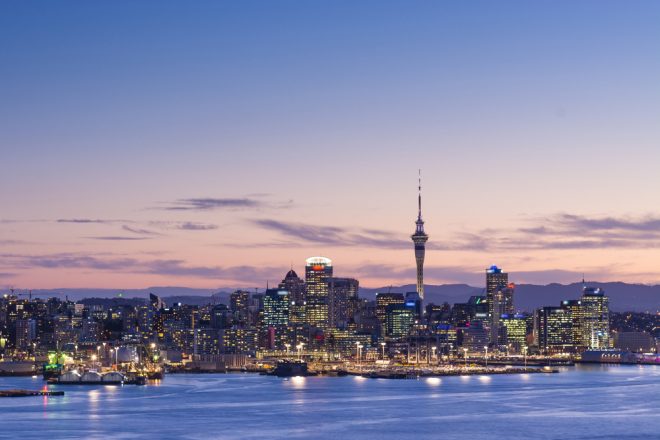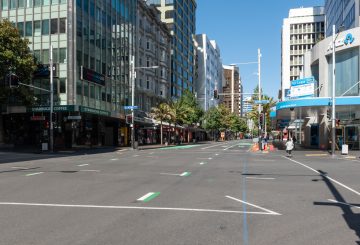オークランドのシンボルであるスカイタワーは、8月3日に25歳の誕生日を迎えます。オークランドタワーは、当初オークランドのスカイラインを支配する巨大なタワーに多くの人々が反対し、物議を醸しましたが、今ではオークランドのシンボルとして、また街の特色として愛される存在となりました。
1997年にフレッチャー建設(Fletcher Construction)によって建設されて以来、1,000万人以上の人々がこのタワーを訪れています。高さは328メートルで、南半球で最も高い建築物です。
スカイシティのCEOであるマイケル・アハーン(Michael Ahearne)氏は、タワーは国内で最も多くの人が訪れる観光名所の1つであると述べています。「スカイシティはタワーを所有していますが、実際には私たちはタワーの管理者に過ぎず、オークランド市民のものなのです。」
スカイシティタワーは、ピンクリボンデーのようなチャリティー活動、地域の取り組み、祝日、節目などのお祝いやイベントに合わせて、さまざまな色にライトアップすることができることで知られています。
メモ:
スカイタワーは65階建てで、麓から最高層の展望台であるスカイデッキまで、合計1,267段の階段でつながっています。
エレベーターで、以下に移動できます:
- スカイラウンジ(182m) – ニュージーランドで最も高い場所にあるカフェで、コーヒーを飲みながらくつろげます。
- 大展望台(186m)– スカイタワーのメイン展望台です。38mm厚のガラスの床を歩いたり、最新の天気予報をチェックしたり、ライブカメラのタッチスクリーンコンピューターでオークランドについて調べたり、ただ座って壮大な景色を眺めたりすることができます。
- スカイデッキ(高さ220m)– 南半球で最も高い場所にある展望台で、継ぎ目のないガラス越しに素晴らしい眺めを楽しむことができます。
大口径の基部は、地震や風力に対して十分な耐性を発揮します。このタワーは、1000年に一度と言われる時速200kmの突風にも耐え、頂上で1mの揺れを安全に抑えることができます。
スカイタワーは、40km地点でマグニチュード7.0、360km地点でマグニチュード8.5の地震に耐えられるように設計されています。
また、落雷に備えて、タワーの90mの鉄塔の上部には、直径50cmの金メッキスパイクの金属製ダイノスフィアが設置されています。これは、雷を引き寄せ、ケーブルを伝って基礎部分に誘導し、エネルギーを地中に分散させるようにするものです。
プレスリリース:SKYCITY





























































